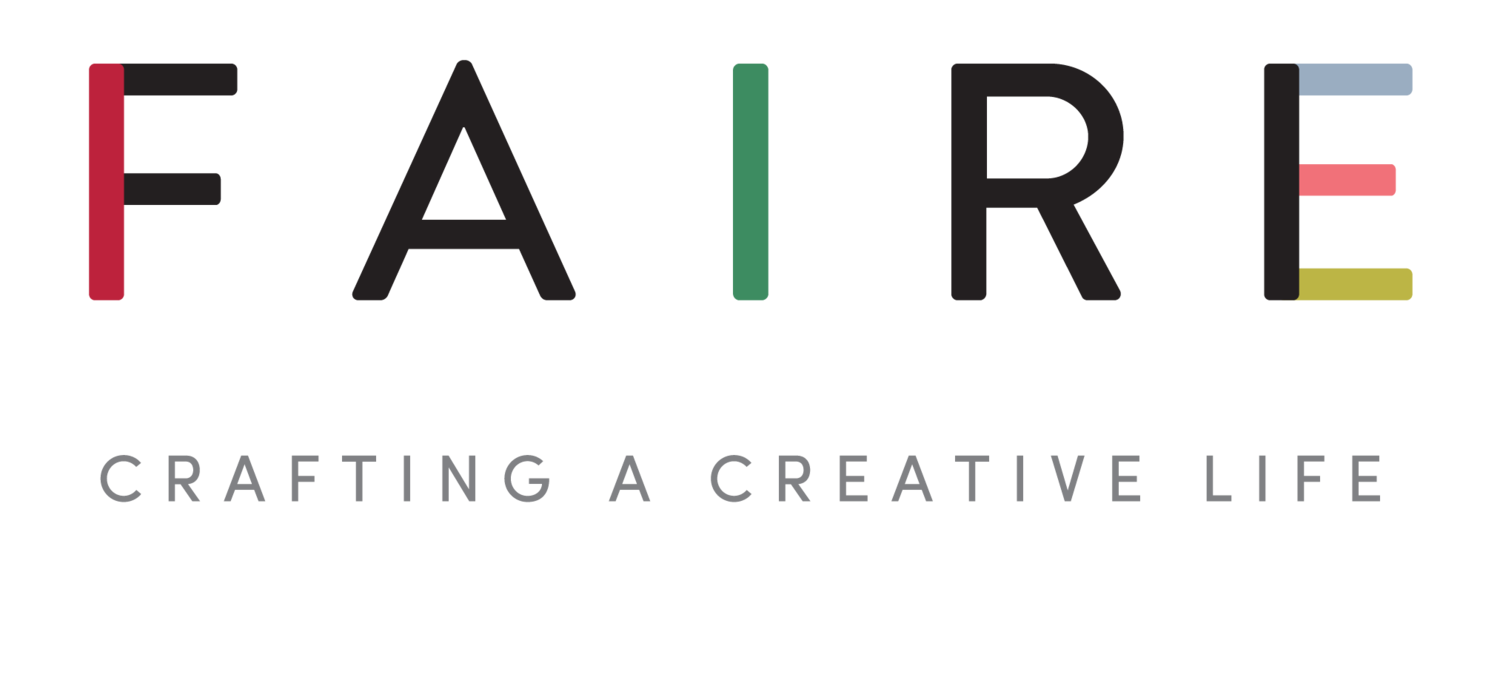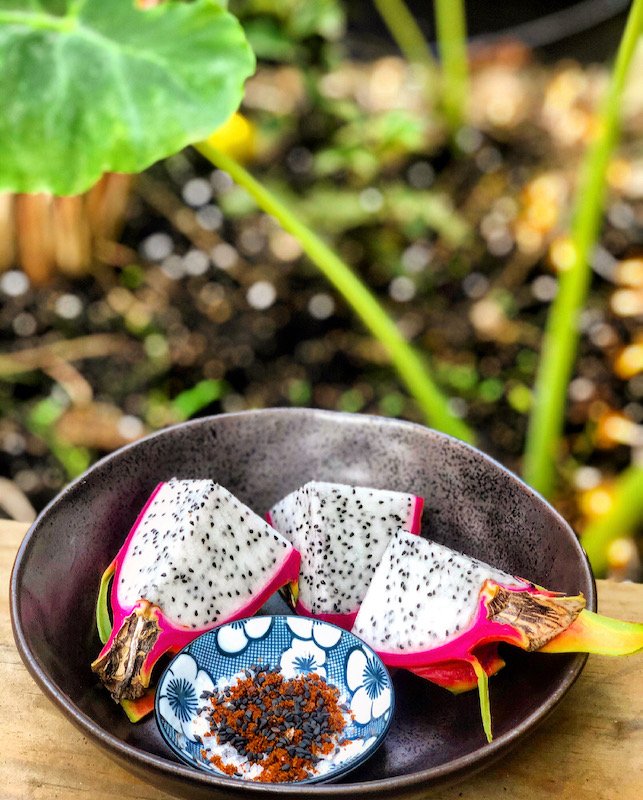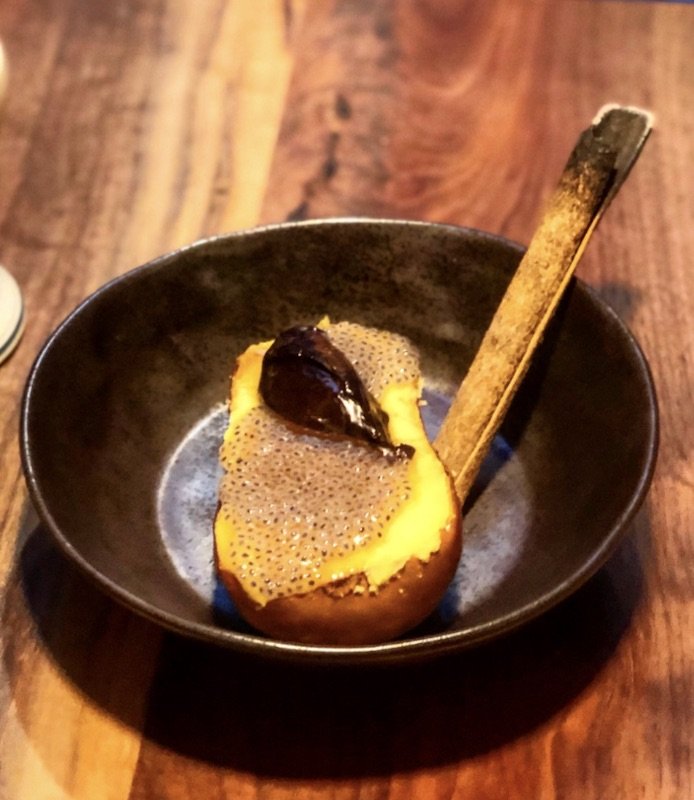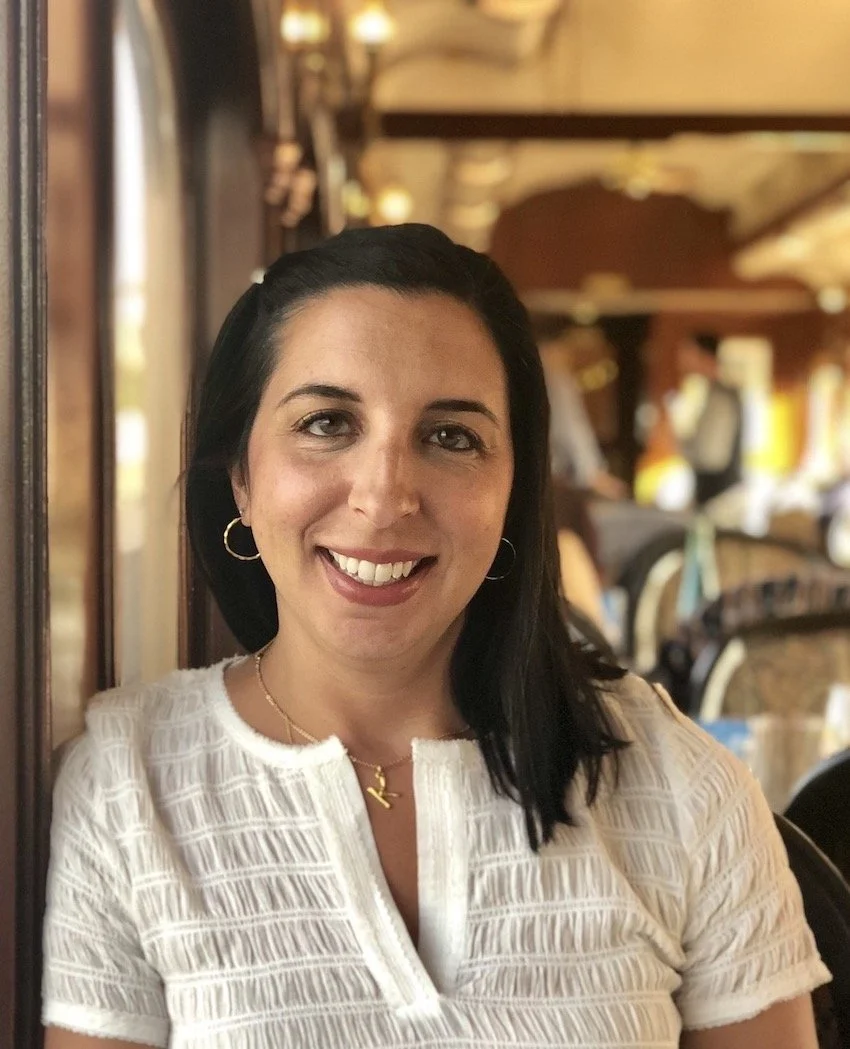10 Questions for A Creative: Matt Le-Khac
Chef Matt Le-Khac in the tea garden, credit Charles Roussel
Words by Kyra Shapurji
Matt Le-Khac’s journey to his present-day creative endeavour as chef and owner of Bolero, a Vietnamese restaurant in Brooklyn, NY, is not your typical chef story arc. After moving to NYC to pursue a PhD in viral biochemistry at Columbia, Matt pursued passions such as djing, fashion photography, and hosting and cooking dinner pop-ups in his Dumbo loft. He cooked at The Finch and Blue Hill Stone Barns, and then after Head Chef at Ăn Chơi (leading the way to push the bone broth movement). Matt opened up Bolero in 2020 to bring seasonal produce and rare herbs and his acquired modern techniques to Vietnamese cuisine in a post-colonial world.
Bolero website
Chef Matt Le-Khac on his family farm in West Chester, PA with the Lemongrass used in several dishes, sauces and marinades at Bolero. Credit Charles Roussel.
KS: How about starting at the beginning of your creative journey with its twists and turns that led you to today with Bolero?
ML-K: I had a loft in Dumbo in 2004, which is the Dumbo before all the skyscrapers started popping up and everything. It was two floors with a mezzanine, 2,200 square feet. We were doing roller derby parties, cello concerts, 300 person dance parties and also hosting a lot of dinner parties which were focused mainly on creating my mom’s recipes. The dinner parties picked up a lot of steam and at one pop-up, the owners of Ăn Chơi came in and they were totally inspired and excited about it. They asked me to come do some pop-ups.
A classic dish from Huế - the home of Matt Le Khac’s family. Usually made with rice and tapioca but at Bolero scallop crudo reproduces the texture of these steamed rice cakes, topped with fish sauce vinaigrette, berkshire crackling, purple seaweed flakes and shrimp crumble.
“It was a very pivotal moment in my life because I was turning 30. I graduated with my PhD program. I also put out my first record at the same time. So that period of my life, I was at this nexus, and thought, ‘I have this PhD. Do I continue on with this path or follow my other passions?’ I felt like I should do what I’m thinking about when I fall asleep at night and what I wake up thinking about. When I was doing my PhD program, I wasn’t really thinking about the science or the next experiment. I was thinking, ‘What is the next pop-up I should be doing?’ ”
A month before my mom passed away, she got to come to one of my pop-ups featuring her food. She spent her entire life raising my brother and I, but she always wanted to open a restaurant. I felt that I wanted to honour my mom by continuing her legacy and by becoming a chef. I love the immediate impact of creating something in the culinary space, and I thought, ‘Hey, I need to go follow this path. It's now or never.’
A vegan curry dish that changes with the season, during the winter it features caramelized kombucha squash. During the late summer, corn and lobster mushroom.
KS: Innovation seems to be a common thread in your culture, your heritage, and in your own path you’ve taken from your PhD, to your DJing, to your cooking. Besides the innovation in the meals at Bolero, how do you explore the innovation in its ambiance and atmosphere?
ML-K: I feel a great restaurant tells the story with a foundation of food, but the guests can experience the story in everything around them. The way we designed the restaurant, we hired these two amazing women, and I just gave them all my nostalgic memories of Việt Nam. I was like, ‘Hey, these are the elements I want, but make it into a form that we can use in Bolero.’ I would say the approach to the design of the restaurant is in these little details, driven by my memories of Việt Nam, but in a way where memories are often better than they actually are in reality, that's our approach.
The front dining room features breeze blocks designed by Aimee Wilder. Fan Pendant lights, custom nostalgic window gate which are ubiquitous in Vietnam.
Mosquito net pendant lights. Interior brought together by Le Whit.
KS: When stepping into Bolero, there’s a pointed overall experience you’re trying to share with everyone from the moment you enter. How would you describe the dining sentiment or feeling that you're going for?
ML-K: I love guests that come in and ask questions. And for someone coming in, the first thing they see is probably the scissor gate entrance, and those are things that are ubiquitous in Việt Nam. So that was a feeling I wanted to recreate here at Bolero. So when someone who has been to Việt Nam before or lived in Việt Nam comes in, they'll immediately have a feeling of nostalgia because the elements are there. I'm very conscious about not forcing culture and history down people's throats, and I didn't want a Disneyland version of the country.
Vietnamese details
Dragon Fruit with chilli powder and ants dipping sauce
KS: I'd love to hear about how and if creativity was something that your parents really chaperoned in you and your brother?
ML-K: On the cooking side of things, my grandmother definitely passed along a lot of the recipes to my mom. But as a child, we had a lot of freedom to explore whatever we wanted to, like buying guitars, playing music and stuff like that. I wasn't really interested in cooking as a kid, but a lot of the foundation was through osmosis.
Shrimp Toast with baby fennel and crispy tails.
“I remember as a kid, everyone had their ‘Ratatouille moment,’ and for me, that moment is whenever I smelled charred onions or charred ginger. So whenever I smell that distinct scent, I’m immediately back to this comforting feeling of, ‘I’m being taken care of.’ I love the fact that guests can have that experience here, even if they’re not Vietnamese–certain smells or certain bites of flavour gives them this comforting feeling of childhood.”
Elephant Ear Stalk or Taro Stem growing next to a bamboo grove on the family farm.
KS: Oftentimes, chefs aren’t necessarily grouped in the circle of ‘creatives’ and people tend to think first of artists, writers, actors, etc. But for me, chefs always come to mind in this definition. As a chef and as a creatively-inclined person, how would you define creativity in your own words?
ML-K: I guess being a musician and recording, when you're recording any song or whatnot when you're mastering, you have to fill out all the frequencies. The more pleasurable songs we listen to are filled out perfectly. It's not one area that's muddy, while empty in other areas. I feel it applies to cooking as well because when you're creating a dish, you want to fill it out. You want to have an activation of all five senses and the sixth sense of umami, too. I feel like creativity is all about - either as a musician having an ear or as a painter or a graphic designer having that eye to ask, ‘yes or no? Will this shade of green go with this yellow? Or will this kick drum go with this hi-hat?’
It's always a decision ‘Yes, that would sound good.’ The great artists and creators are able to say ‘yes’ at the right points when that road comes to that decision. For a chef, when I create, and when we plate it, I ask, ‘Does everything belong and have a reason to be here? Yes or no?’
Harvesting Betel Leaf. Credit Charles Roussel
Fresh lemongrass from the farm. Credit Charles Roussel
“I feel a great restaurant tells the story with a foundation of food, but the guests can experience the story in everything around them.... I’m very conscious about not forcing culture and history down people’s throats, and I didn’t want a Disneyland version of the country. ”
Pomelo Crab Salad
Crystal Jelly Cake
KS: Who are some people that you look to for creative inspiration across the board (and in any realm whether familial, friends, professional, cooking, or music)?
ML-K: I feel like Wong Kar-wai is a big influence on my life. He was able to create this feeling of nostalgia just through the visual medium and the music. It's kind of similar to creating a restaurant, you have the visual elements of design, the music and food. And he was able to create the feeling of Hong Kong back in the 1950s and '60s when he was a child.
And James Murphy. [He] brought back the sound 20 years ago to a newer generation, and I feel like we're bringing these dishes that all Vietnamese people know or all well-travelled people would know about Việt Nam, but we're making it available to people in New York, who can't afford to go to Việt Nam. So I'm really happy at this point that I have a platform in New York to give back to the people that have made my New York experience. James Murphy orders delivery from us, and I'm able to give back to him. It's a beautiful thing to be able to give back to this city that has given me so much, in some form, to create some sort of ripple.
Vietnamese crispy crepe
Wintermelon gaspacho
KS: Well, since you feel satisfied in that way though, what do you not feel satisfied with? What do you want to keep inventing and do next? I mean, what do you hope or dream for?
ML-K: I think right now it's an exciting period for Vietnamese food in New York City, and I would love to open a Bolero that's specialized in Huế, the Mekong Delta, certain forms or techniques like grilling or just a soup house. We're starting to see that, which is great.
King Ouster Mushroom Tamale
KS: Can you share one or two philosophies around creativity that you believe to be true?
ML-K: I love that challenge of the greater the restriction, the more creative you can be. So if you let the seasons restrict you, then you don't have to have tomatoes on your dish year-round because tomatoes suck in the middle of winter.
Fresh Bamboo Shoot Curry
KS: Some other aspects like travel seem to inspire and influence you as a chef. You mentioned you bought a motorcycle recently to keep that flavour or that piece of Việt Nam with you. Can you share how this influences you?
ML-K: For me riding a motorbike or motorcycle is the best way to see a country because you smell it, and you're really in it. You smell charcoal rotisserie or street food. You hear laughter and children playing. In Việt Nam, you always hear water splashing everywhere because they have buckets everywhere. In Sài Gòn, and on a Friday night, driving a motorbike, it's almost like “American Graffiti” back in the '50s, you just go cruising, you hear couples on a date, they have no destination. They're just cruising around. You can hear their intimate conversations. You're not separated.
Sweet Mung Bean Pudding
KS: How do you think your Vietnamese restaurant is pushing the envelope from other Vietnamese spots right now?
ML-K: I spent a lot of time doing in-depth research on where each dish came from. I spent a lot of years with my nose in books figuring out the history. A lot of the Vietnamese chefs, they have a memory of cooking with their family, but I don't think they’ve actively researched where the dish came from or how it came to be. I have more of a foot in the historical, colonial pressures and the experience of the Vietnamese people and the driving force. I definitely put an emphasis on creating dishes, or if a dish comes into being at Bolero, there's a reason or a story behind it. I feel like this is my way of really owning it, and we must push it forward.
Find out more about Bolero’s current menu and upcoming events on their website or on Instagram.
This feature was written by Kyra Shapurji.
By day, Kyra is a Program Manager but moonlights as a writer on culture, travel, and the creative arts. She feels most comfortable and at ease when she's in the company of artists and creatives chatting about books and inspiration for a project, and listening to others tell their life story.
In the past, Kyra was the Managing Editor at LoftLife, Assistant to Travel & Research Editor at Saveur and has written for Hôtel Weekend and HILUXURY Travel.
As a recent contributing writer for FAIRE Journal, she also currently writes for Fathom. She also believes strongly in volunteering in one's community, and for the last five years, Kyra was a mentor with NYC's Bigs & Littles program.
Kyra currently lives and works in Brooklyn, NY, and when she's not out at a new restaurant, art exhibit or theatre show, she's got her nose in a book or The New Yorker and is most certainly planning her next travel itinerary. Her published work and blog can be found here, and for her latest travels find her on Instagram @shap_attack.





















